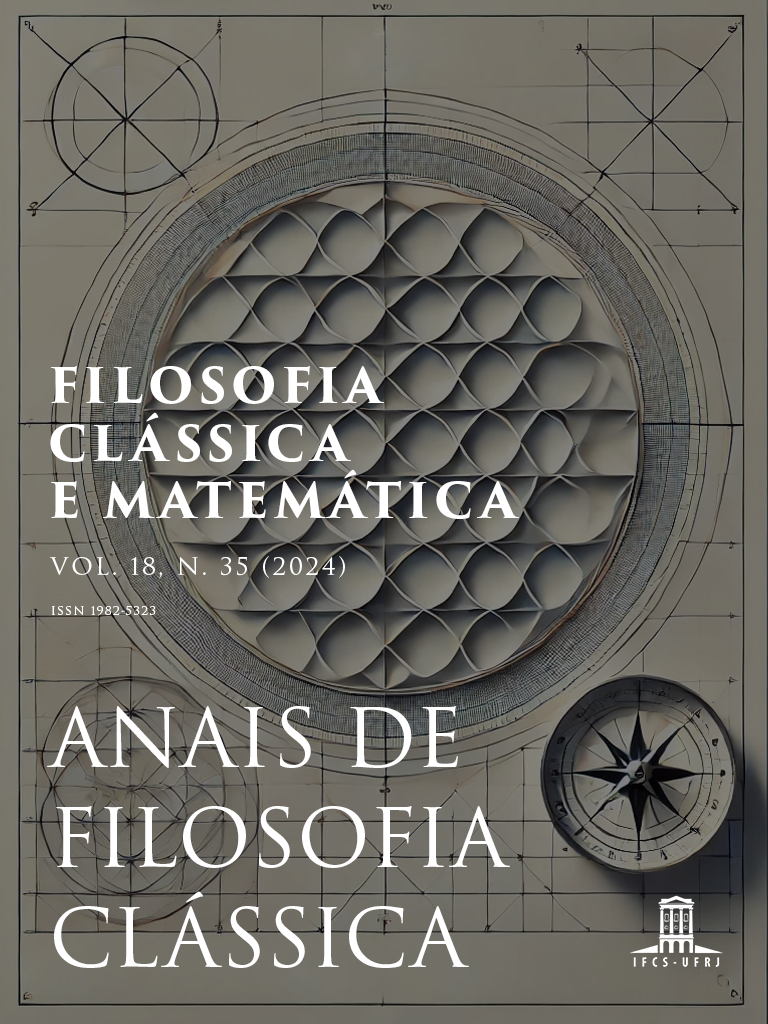Vol. 18 No. 35 (2024): Classical Philosophy and Mathematics

Issue No. 35 (2024) is the result of open submissions rather than a special dossier. It features several articles stemming from the collaboration between the OUSIA Laboratory and research groups such as the Séminaire Présocratiques of the Centre Léon Robin. Notably, we find Nestor Cordero’s original perspectives on the ontological investigations of Parmenides and Heraclitus—ancient “physicists” in the proper sense of physis—as well as an article by the young researcher Prudence Audié on the divinized roots of Empedocles' Cosmology. Both contributions reopen the critique of the Aristotelian perspective that has shaped the canonical interpretation within the History of Philosophy.
This issue also presents articles emerging from seminars organized by the UFRJ History of Mathematics group—Pã Montenegro and Gérard Grimberg, discussing the quadrature of the circle in Antiphon and Brison—and by the Universal Logic team, with Henrique Maia examining Epicurus’ “hedonistic algorithm.” Alongside Pedro Lemgruber’s article on the role of the principle of non-contradiction in Aristotelian ontology, these works address axiomatic aspects of thought that foster interdisciplinary dialogue between Philosophy and Mathematics. This confluence led us to title the volume CLASSICAL PHILOSOPHY AND MATHEMATICS. Although the pairing might seem coincidental in the context of this editorial collection, it is grounded in longstanding discussions uniting axiomatic, logical, and ontological questions. As legend has it, the portico of the Academy was inscribed with the admonition: Do not enter without passing through Geometry.
Additional articles extend beyond these central themes. Gian Carvalho examines the concept of the Good as a key to identifying continuities and breaks between Aristotle’s Practical Philosophy and Plato’s Politics, and there is also a reflection on the historicity of Diotima in Plato’s Symposium. The latter not only highlights the dramatic character of the dialogue but also calls attention to the role of women in the History of Philosophy.
We extend our gratitude to our regular collaborators, Verônica Araújo and Caroline Ting, and our designer, Marlus Araújo, for their invaluable work in the final editing of this issue. We also thank all the reviewers, whose names may not appear in editorials but will be featured in periodically published lists.
Enjoy your reading!

